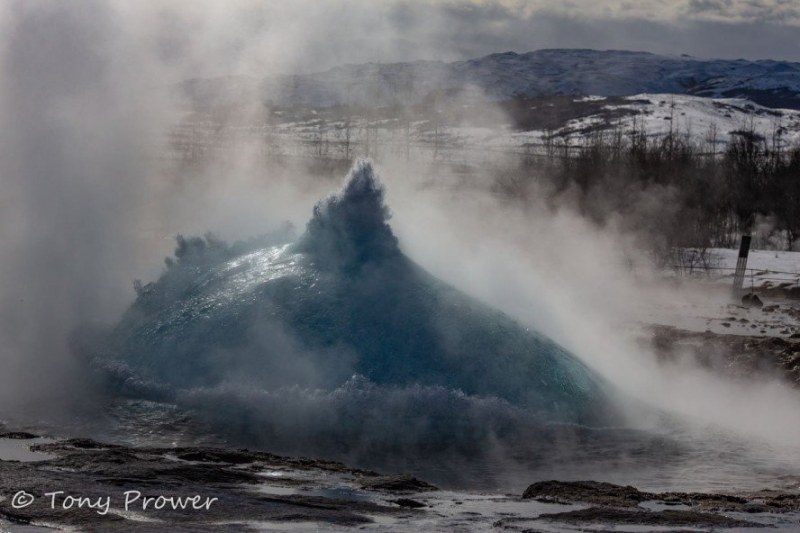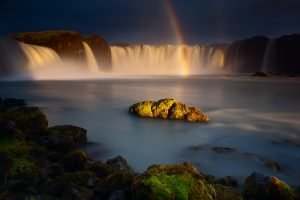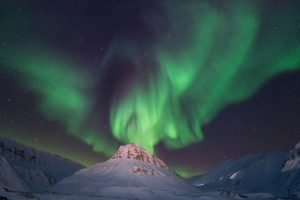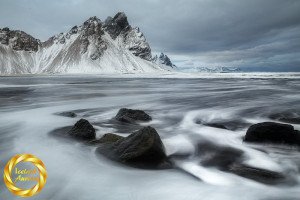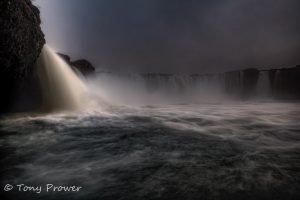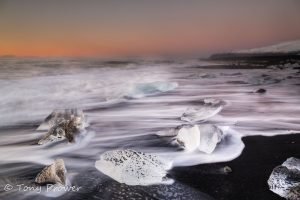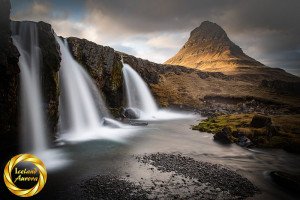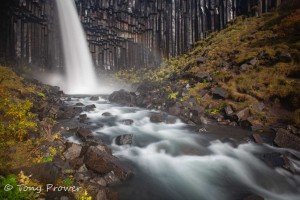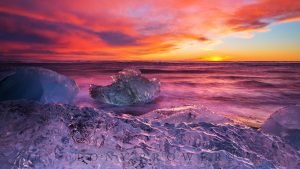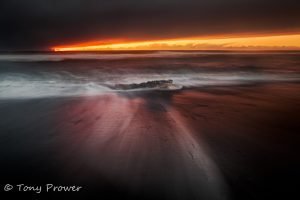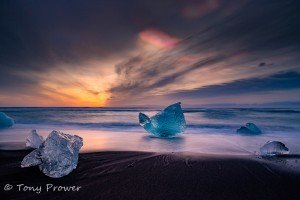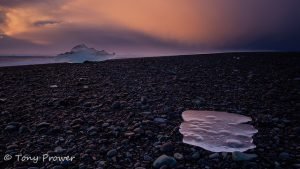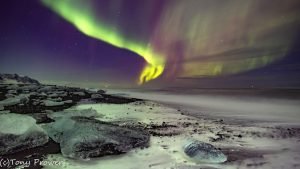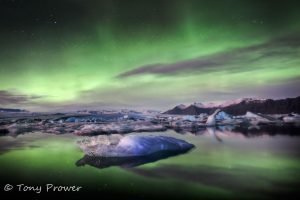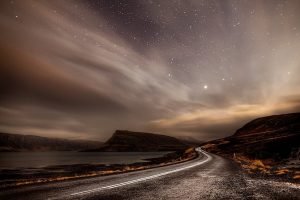Revealing things
One of the things I love about photography is that you are able to see things you normally wouldn’t. This is especially evident with Night photography when a long exposure reveals objects and colours that you never knew were there.
When you become interested in certain kinds of photography such as time-lapse, long exposures or even high speed photography, you start to think differently, you start to think about moving objects and how they might appear in a long exposure photograph, or slowed down as in High speed filming or sped up as in time-lapse. Either way, you are beginning to conceptualise the un-seen.
Tours Around Iceland
Long Exposures
Long exposure water scenes demonstrate this nicely.
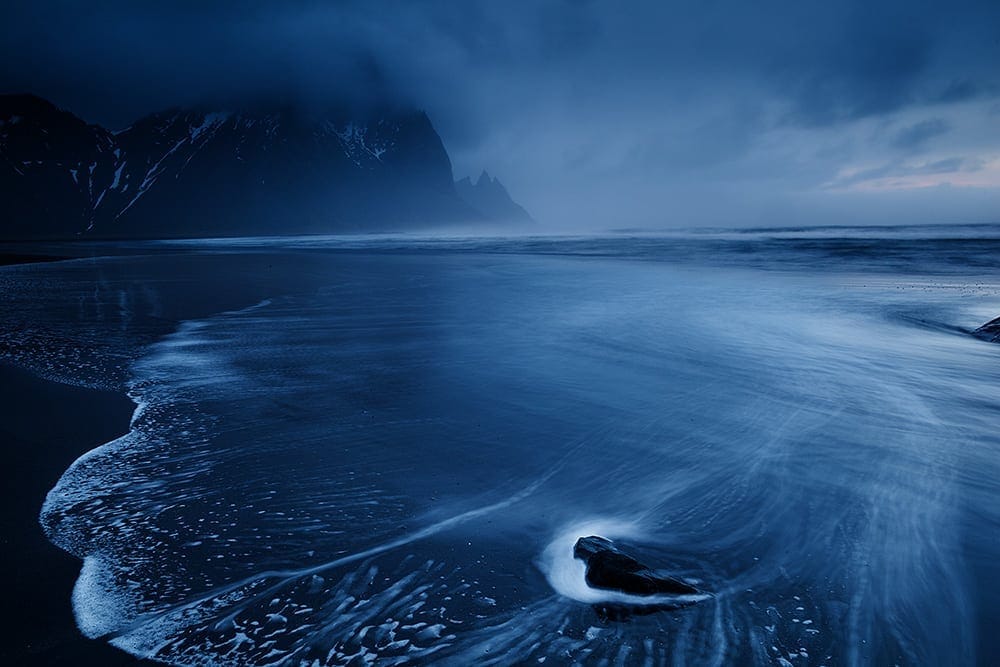
With this shot, I positioned the rock to balance the scene and waited for a swell of sea water to hit the rock, the concept was that the receding sea would create a line from the rock which would serve to lead the eye into the rest of the scene… seeing the un-seen.
The same event could have been captured with time-lapse, but this would be better if the rock was being hit regularly, it might have worked with high speed, but I fear it would have a boring result. Photography is able to communicate the whole event in a single, frozen, image. The photograph has managed to capture the movement, this might not have worked so well without the initial long exposure concept and the ability to see the un-seen.
Another great way to demonstrate seeing the unseen is with cloud movements and star trails.
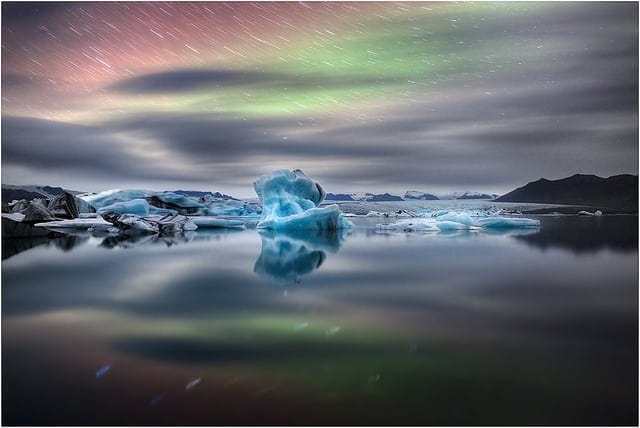
Cloud movement can be hit and miss. It is a good idea to consider the speed and direction of movement before you decide on the shutter speed. Ideally, they should be moving towards you or away from you. Generally, a longer exposure is better. The same is true of star trails although the modern DSLR is not the best way to capture star trails. What is important in both cases is to have a motionless object in the scene, this acts as an anchor and adds the conceptual contrast between the permanent and temporary. In the above scene, this is an illusion because the stars are permanent and the ice is ephemeral. Maybe instead this creates the impression of a piece of ice floating motionless on a mirror lake while the earth spins round and clouds move over head… seeing the un-seen.
Focal Length
A super wide angle allows you to see a scene much differently. We have predator eyes. Our eyes work together to see very well in front of us. This is good for hunting, but as a consequence our field of view is fairly narrow. Photography with a super-wide angle will give you a view similar to that of a rabbit, bird or other prey animals. Some humans have a blindness that narrows their visual field significantly – tunnel vision. Photographing with a wide angle lens can help these people see the world better.
Exposure
As discussed in night photography, the exposure can reveal the hidden or hide the visible. A creative photographer will use under or over exposure to create a different reality.
How has photography helped you see things you normally don’t?
